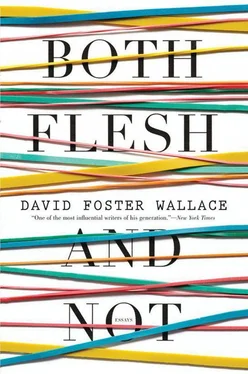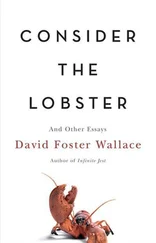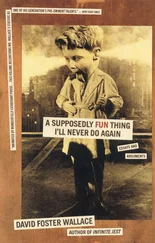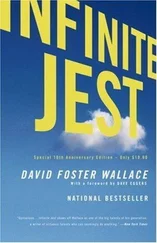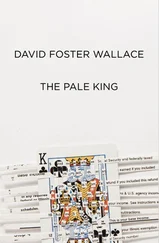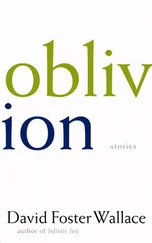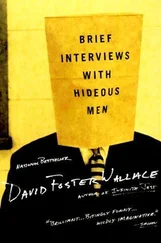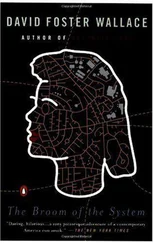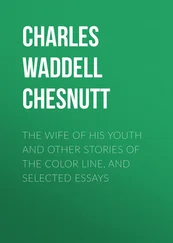David Wallace - Both Flesh and Not - Essays
Здесь есть возможность читать онлайн «David Wallace - Both Flesh and Not - Essays» весь текст электронной книги совершенно бесплатно (целиком полную версию без сокращений). В некоторых случаях можно слушать аудио, скачать через торрент в формате fb2 и присутствует краткое содержание. Год выпуска: 2012, Издательство: Little, Brown and Company, Жанр: Публицистика, на английском языке. Описание произведения, (предисловие) а так же отзывы посетителей доступны на портале библиотеки ЛибКат.
- Название:Both Flesh and Not: Essays
- Автор:
- Издательство:Little, Brown and Company
- Жанр:
- Год:2012
- ISBN:нет данных
- Рейтинг книги:3 / 5. Голосов: 1
-
Избранное:Добавить в избранное
- Отзывы:
-
Ваша оценка:
- 60
- 1
- 2
- 3
- 4
- 5
Both Flesh and Not: Essays: краткое содержание, описание и аннотация
Предлагаем к чтению аннотацию, описание, краткое содержание или предисловие (зависит от того, что написал сам автор книги «Both Flesh and Not: Essays»). Если вы не нашли необходимую информацию о книге — напишите в комментариях, мы постараемся отыскать её.
). Both Flesh and Not Never has Wallace's seemingly endless curiosity been more evident than in this compilation of work spanning nearly 20 years of writing. Here, Wallace turns his critical eye with equal enthusiasm toward Roger Federer and Jorge Luis Borges;
and
; the nature of being a fiction writer and the quandary of defining the essay; the best underappreciated novels and the English language's most irksome misused words; and much more.
Both Flesh and Not
Both Flesh and Not: Essays — читать онлайн бесплатно полную книгу (весь текст) целиком
Ниже представлен текст книги, разбитый по страницам. Система сохранения места последней прочитанной страницы, позволяет с удобством читать онлайн бесплатно книгу «Both Flesh and Not: Essays», без необходимости каждый раз заново искать на чём Вы остановились. Поставьте закладку, и сможете в любой момент перейти на страницу, на которой закончили чтение.
Интервал:
Закладка:
A lady making her way in that sideways-processional way past seats in the row right beneath me wears a shirt advising all onlookers that they ought to Play Hard because Life Is Short. The man on her arm wears a (too-large) designer T-shirt decorated with images of U.S. currency. A firm/pleasant usher stops them halfway across the row to check their tickets. Fifteen hundred citizens of the borough of Queens are employed at the Open today. Weekend labor. The ushers are at their fat chains stretched across the Stadium tunnels, all wearing chinos and button-down shirts. The Security guys (all large and male, not a neck or a smile in sight) wear lemon-yellow knit shirts that do not flatter their guts. Chewing-gum seems to be part of Security’s issued equipment. The ballboys 5are in blue-and-white Fila, while the line judges and umpires are in (Fila) shirts of vertical red-black stripes that make them look like very hip major-sport refs. The Stadium’s capacity is supposedly 20,000 and there are at least 23,000 people here, mostly to see Pete. If there were rafters people would be hanging from them, and I will be shocked if there isn’t some major screaming fall-down-the-steps- or topple-backward-over-the-rim-of-the-wall-type disaster before the match is done. The crowd down here near the court is for the most part adult-looking, businessish — in the Box Seats and pricey lower stands are neckties, sockless loafers, natty slacks, sweaters w/arms tied across chests, straw boaters, L.L. Bean fishing hats, white caps with corporate names, jeweled bandeaux, high heels, and resplendent feminine sunhats — with a certain very gradual casualizing as the fashion-eye travels up (and up) past the progressively cheaper seats, until the vertiginous top sections of the bleachers feature an NYC sporting event’s more typical fishnet shirts and beer hats and coolers and makeshift spittoons, halter tops and fluorescent nail polish and rubber thongs, w/attendant coarse NYC-crowd noises sometimes drifting down from way up high overhead. 6But apparently over 50 percent of tickets for this year’s Open were pre-sold to corporations, who like to use them for the cultivation of clients and the entertainment of their own executives, and there is indeed about the Stadium crowd down here something indefinable that strongly suggests Connecticut license plates and very green lawns. In sum, the socioeconomic aura here for the day’s headline match is one of management rather than labor.
The players’ umbrellas and chairs and big EVIAN-labeled barrels of drinks are on either side of the umpire’s chair at the base of the Stadium’s western cliff face, in a long thin patch of shade that ripples when the heads of the people way overhead move, and it’s cool in that shade — it’s cool for me, as well, in the shade of the very large man next to me, who’s wearing a gorgeous blue cord three-piecer and what seems to be a kind of huge sombrero — but the sunlight is summery, the sun (as mentioned) explosive, seeming to swell as it lowers, at 1535h. positioned about 40° above the Stadium’s W battlements; and the Grandstand Court, attached to the Stadium’s E flank, is knife-sliced by the well-known PM Grandstand shadow that Jim Courier is even now using to vivisect Kenneth Carlsen in full view of diners at Racquets (the impossible-to-get-into glass restaurant built into the wall that separates the Grandstand’s W flank from the Stadium’s E) and the 6,000+ crowd in there, a lot of whose nationalistic whistles and applause intrude into the Stadium’s sonic fold and lend a kind of surreally incongruous soundtrack to Sampras and Philippoussis’s exchanges as they warm up. Sampras is hitting with the casual economy that all the really top pros seem to warm up with, the serene nonchalance of a creature at the very top of the food chain. The Wimbledon champion’s presence aside, this third-rounder has particular romance about it because it features two Greeks neither of whom are in fact from Greece, a kind of postmodern Peloponnesian War. Philippoussis, just eighteen, Patrick Rafter’s doubles partner, ranked in the top 100 in this his first year on tour, potential superstar and actual heartthrob, 7resembles Sampras, somewhat — same one-handed backhand and slight loop on the forehand’s backswing, same café-au-lait coloring and Groucho eyebrows and very black hair that get glossy with sweat — but the Australian is slower afoot, and in contrast to Sampras’s weird boneless grace he looks almost awkward, perilously large, his shoulders square the way heavy guys with bad backs’ shoulders are square. Plus he seems to have aggression-issues that need resolving: he’s hitting the ball as hard as he can even in warm-up. He seems brutish, Philippoussis does, Spartan, a big slow mechanical power-baseliner 8with chilly malice in his eyes; and against him, Sampras, who is not exactly a moonballer, seems almost frail, cerebral, a poet, both wise and sad, tired the way only democracies get tired, his expression freighted with the same odd post-Wimbledon melancholy that’s dogged him all summer through Montreal, Cincinnati, etc. Thomas Enqvist’s epic 2–6 6-2 4–6 6-3 7–6 (7–5) first-rounder against Marcelo Rios and Agassi’s second-round squeaker against Corretja notwithstanding, it’s tempting to see this upcoming match as the climax of the Open so far: two ethnically agnate and archetypally distinct foes, an opposition not just of styles of play but of fundamental orientations toward life, imagination, the uses of power… plus of course economic interests.
Covering the four walls down around the Stadium Court is a kind of tarp, chlorine-blue, 9and on it, su rend on irrounding the court, are the white proper nouns FUJIFILM, REDBOOK MAGAZINE, MASSMUTUAL, U.S. OPEN ’95— A U.S.T.A. EVENT, CAFÉ de COLOMBIA (complete w/a dotted white outline of Juan Valdez and devoted burro), INFINITI, TAMPAX, and so on. 10Professional tennis always gets called an international sport, but it would be more accurate to call it a multinational sport: fiscally speaking, it exists largely as a marketing subdivision of very large corporations, and not merely of the huge Tour-underwriting conglomerates like IBM and Virginia Slims. The hard core of most professional players’ earnings comes from product endorsement. Absolutely every venue and piece of equipment associated with pro events has some kind of ad on it. Even the official names of most pro tournaments are those of companies that have bid to be a “title sponsor”: the Canadian Open this year was the “du Maurier Ltd. Open” (for a Canadian cigarette company), Munich was the “BMW Open,” New Haven was the “Volvo International” (next year it’s to be the “Pilot Pen International”), Cincinnati the “Thriftway ATP Championship,” and so on. The U.S. Open, 11being a Slam and a national championship, doesn’t have a title sponsor like Munich or Montreal; but instead of decommercializing the event, the tournament’s Slam-status just makes the number of different commercial subsidizations more dizzying. The Open has an official sponsor not just for the tournament but for each of the tournament’s various individual events: Infiniti sponsors the Men’s Singles, Redbook the Women’s Singles, MassMutual the Junior Boys, and so on. 12
Now the umpire has ordered Play and Sampras is getting ready to serve, lifting the toe of his front foot on the toss’s upswing in that distinctive way he has. I’ve never gotten to see Sampras play live before, and he’s far more beautiful an athlete than he appears to be on TV. He’s not particularly tall or muscley, but his serve is near-Wagnerian in its effect, and from this close up you can see that it’s because Sampras has got some magic blend of flexibility and timing that lets him release his whole back and trunk into the serve — his whole body can snap the way normally just a wrist can snap — and that this has something to do with the hunched, coiled way he starts his service motion, lifting just the toe of his front foot and sighting over the racket like a man with a crossbow, a set of motions that looks ticcy and eccentric on TV but in person makes his whole body look like one big length of muscle, a kind of angry eel getting ready to writhe. Philippoussis, who likes between points to dance a little in place — perhaps to remind himself that he can indeed move if he needs to — awaits service without facial affect. His headband matches his candy-stripe shirt. The scoreboards’ displays are now set for keeping score instead of flashing ads. Philippoussis’s name eats up a large horizontal section of each board. The wall between Stadium and Grandstand (so on our E side) is topped by the press box, which runs along the wall’s whole length and basically looks like the world’s largest mobile home, all its windows’ tinted shades now pulled against the PM sun. Three points have now yielded an ace, a service-return winner, and a long rally that ends when Philippoussis comes in on an approach that’s not quite in the exact backhand corner and Sampras hits an incredibly top-heavy short angle past him into the ad service court. The fierceness of Sampras’s backhand is something else that TV doesn’t communicate well, his racket-head control more like that of one of those stocky clay-courters with forearms like joints of mutton, the topspin so heavy it distorts the ball’s shape as the passk a as the dips like a dropped thing. The malevolent but cyborgian Philippoussis hasn’t betrayed anything like an actual facial expression yet. He also doesn’t seem to perspire. 13Two older guys in the row right behind me are exhorting Sampras in low tones, addressing him as “Petey,” and I can’t help thinking they’re friends of the family or something. And propped up over the press box — so at about the height of a radio station’s aerial — is the 1995 U.S. Open’s own ad for itself. It’s an enormous pointillist pastel print of an N.T.C. Stadium’s crowd around an outsized court, the perspective weirdly foreshortened, and then with the well-known Manhattan skyline ballooning in the immediate background in a way it decidedly does not in the real Flushing, Queens; and then above and beyond the billboard is the big zucchini of the Fuji Inc. blimp floating slowly against the cerulean of far and away the best summer sky I have ever seen around New York City. Not only is the ’95 Open’s L.D.W. air unhumid and in the eighties, the sunshine astringent and the breeze feathery and the sky the overvivid blue of a colorized film, but the sky’s air is clean, the air smells fine and keen and sweet the way line-dried laundry smells, the result not only of a month without rain 14but also this weekend of a freak high-pressure front that’s spiraled southwest out of Nova Scotia’s upper air and is blowing the oxides and odors that are NYC’s deserved own out over New Jersey. The Stadium’s bowl of air gets finer and keener the higher up in the stands you go, until, standing on top of somebody’s smuggled Michelob cooler in the top row of bleachers 15and peering over the wall due east past the edge of the press box, looking down over the big sign that says
Читать дальшеИнтервал:
Закладка:
Похожие книги на «Both Flesh and Not: Essays»
Представляем Вашему вниманию похожие книги на «Both Flesh and Not: Essays» списком для выбора. Мы отобрали схожую по названию и смыслу литературу в надежде предоставить читателям больше вариантов отыскать новые, интересные, ещё непрочитанные произведения.
Обсуждение, отзывы о книге «Both Flesh and Not: Essays» и просто собственные мнения читателей. Оставьте ваши комментарии, напишите, что Вы думаете о произведении, его смысле или главных героях. Укажите что конкретно понравилось, а что нет, и почему Вы так считаете.
